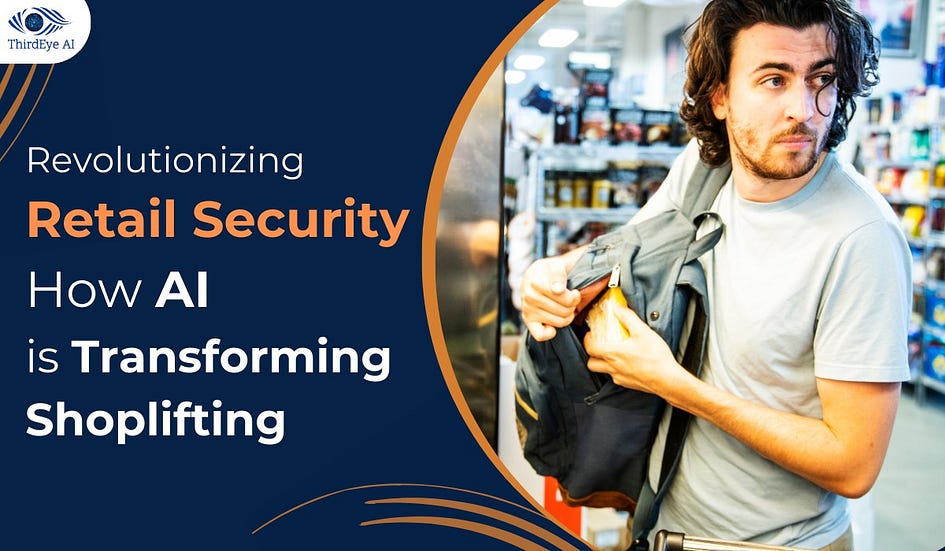 Shoplifting is a persistent challenge for retailers worldwide, leading to significant financial losses each year. Traditional security measures, such as security cameras and manual monitoring, have limitations in effectively preventing theft. However, with advancements in artificial intelligence (AI) technology, businesses are leveraging innovative solutions to tackle this problem head-on. In this blog post, we’ll explore how AI is revolutionizing retail security by empowering businesses to combat shoplifting in stores more effectively.
Shoplifting is a persistent challenge for retailers worldwide, leading to significant financial losses each year. Traditional security measures, such as security cameras and manual monitoring, have limitations in effectively preventing theft. However, with advancements in artificial intelligence (AI) technology, businesses are leveraging innovative solutions to tackle this problem head-on. In this blog post, we’ll explore how AI is revolutionizing retail security by empowering businesses to combat shoplifting in stores more effectively.
Understanding the Shoplifting Epidemic
Shoplifting poses a significant threat to the profitability of retail businesses. According to the National Retail Federation (NRF), losses due to shoplifting amounted to billions of dollars annually. Beyond the financial impact, shoplifting also disrupts operations, damages brand reputation, and undermines customer trust.
The Rise of AI in Retail Security
Artificial intelligence has emerged as a game-changer in the fight against shoplifting. AI-powered surveillance systems utilise advanced algorithms to analyse video footage in real-time, enabling swift detection of suspicious behaviour. These systems can identify patterns, detect anomalies, and even predict potential theft incidents before they occur.
Key Features of AI-Powered Surveillance
- Real-time Monitoring: AI surveillance systems continuously monitor store environments, alerting security personnel to any suspicious activity.
- Behavioural Analysis: By analyzing shopper behaviour, AI algorithms can distinguish between normal activities and potential shoplifting behaviours.
- Object Recognition: AI can recognize specific objects commonly associated with theft, such as concealed items or empty packaging left behind.
- Integration with Existing Systems: AI solutions seamlessly integrate with existing security infrastructure, enhancing overall effectiveness without significant operational disruptions.
Enhancing Store Security with AI
AI-driven surveillance goes beyond traditional security measures by providing proactive and intelligent monitoring. Retailers can deploy AI-powered cameras strategically throughout their stores to cover blind spots and high-risk areas effectively. This comprehensive coverage ensures that no suspicious activity goes unnoticed, deterring potential shoplifters and reducing theft incidents.
Preventing False Alarms with AI
One challenge of traditional security systems is the prevalence of false alarms, which can lead to desensitization among staff and decreased responsiveness to genuine threats. AI addresses this issue by minimizing false positives through advanced analytics and contextual understanding. By accurately distinguishing between innocent behaviours and actual theft attempts, AI helps security teams focus their attention where it’s needed most.
Data-Driven Insights for Loss Prevention
Another benefit of AI-powered surveillance is the generation of actionable insights derived from data analysis. By analyzing patterns of theft and identifying trends, retailers can implement targeted preventive measures to mitigate future risks effectively. These insights empower businesses to optimize security protocols, allocate resources efficiently, and proactively address emerging threats.
Conclusion
In the ever-evolving landscape of retail security, artificial intelligence stands out as a transformative technology that promises to revolutionize how businesses combat shoplifting in stores. By harnessing the power of AI-driven surveillance, retailers can enhance security, minimise losses, and create safer shopping environments for customers and employees alike. As the adoption of AI continues to grow, it’s clear that the future of retail security is intelligent, proactive, and powered by innovation.
Comments